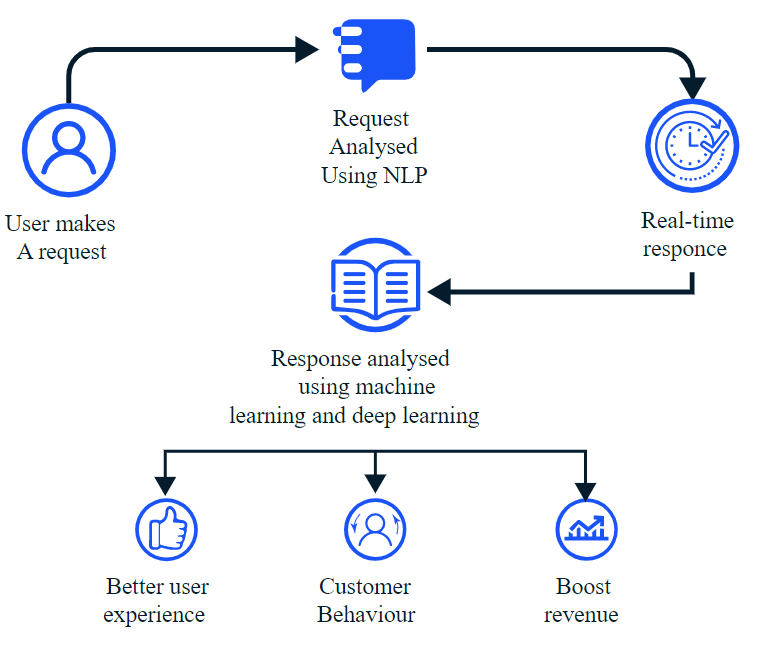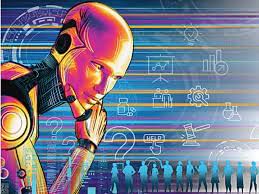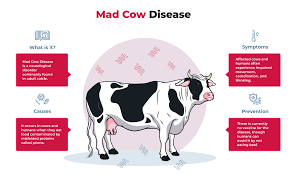Science and Technology: February 2023 UPSC Current Affairs | Science & Technology for UPSC CSE PDF Download
ALMA Telescope
Context
The Atacama Large Millimetre/submillimetre Array (ALMA) is set to get software and hardware upgrades.
About
- The upgrade will help it collect much more data and produce sharper images than ever before.
- The most significant modernisation made to ALMA will be the replacement of its correlator, a supercomputer that combines the input from individual antennas and allows astronomers to produce highly detailed images of celestial objects.
- ALMA’s correlators are among the world’s fastest supercomputers.
Atacama Large Millimetre/submillimetre Array
About: ALMA is a state-of-the-art radio telescope comprising 66 antennas that studies celestial objects at millimetre and submillimetre wavelengths.
- They can penetrate through dust clouds and help astronomers examine dim and distant galaxies and stars out there.
- It also has extraordinary sensitivity, which allows it to detect even extremely faint radio signals.
- Location: Atacama Desert of northern Chile.
- It has been fully functional since 2013, and has helped astronomers make groundbreaking discoveries, including that of starburst galaxies and the dust formation inside supernova 1987A.
- Development: It was designed, planned and constructed by the US’s National Radio Astronomy Observatory (NRAO), the National Astronomical Observatory of Japan (NAOJ) and the European Southern Observatory (ESO).
- Operation: ALMA is operated under a partnership among the United States, 16 countries in Europe, Canada, Japan, South Korea, Taiwan, and Chile; the announcement came after all the partners cleared the funding required for the improvements.
Why is ALMA located in Chile’s Atacama Desert?
ALMA is situated at an altitude of 16,570 feet (5,050 metres) above sea level on the Chajnantor plateau in Chile’s Atacama Desert.
- Reason: as the millimetre and submillimetre waves observed by it are very susceptible to atmospheric water vapour absorption on Earth.
- Moreover, the desert is the driest place in the world, meaning most of the nights here are clear of clouds and free of light-distorting moisture — making it a perfect location for examining the universe.
Findings of Telescope
In 2013: Starburst galaxies
- ALMA provided detailed images of the protoplanetary disc surrounding HL Tauri — a very young T Tauri star in the constellation Taurus, approximately 450 light years from Earth.
In 2015:
- It helped scientists observe a phenomenon known as the Einstein ring, which occurs when light from a galaxy or star passes by a massive object en route to the Earth.
- It also provided the first image of the supermassive black hole at the centre of our own Milky Way galaxy.
- The image was unveiled by scientists in May 2022.
Google’s Bard: AI Generative Chatbot
Context:
- Google has made a decisive move in the generative artificial intelligence (AI) race, announcing that it is working on a competitor to ChatGPT called ‘Bard’.
What is a chatbot?
- A chatbot is a rules-based computer program, which simulates human interaction with end-users via a chat interface. In other words, a chatbot can have a conversation with you just like a real person, ask questions and answer queries based on pre-defined rules and logic.
- Machine Learning Algorithms power the conversation between a human being and a chatbot.

How will Google’s Bard work?
- The service will use artificial intelligence to generate answers in text when people type in queries, similar to what ChatGPT does.
- Bard can help people perform tasks like planning a baby shower, compare two Oscar-nominated movies, or explain discoveries by NASA to a 9-year-old child.
- Bard is based on Google’s AI model called LaMDA, which the company introduced in 2021 as its generative language model for dialogue applications which can ensure that the Google Assistant would be able to converse on any topic.
Bard Vs Chat GPT
- Google’s BARD has the ability to draw information from the Internet. “It does so by drawing on information from the web to provide fresh, high-quality responses.
- ChatGPT has the ability to respond to complex queries — though with varying degrees of accuracy — but its biggest shortcoming perhaps is that it cannot access real-time information from the Internet. ChatGPT’s language model was trained on a vast dataset to generate text based on the input, and the dataset, at the moment, only includes information until 2021.
Concerns:
- The text generation software from Google and OpenAI, can be extremely prone to inaccuracies. The ability to search the Internet in real-time, including content such as hate speech and racial and gender biases and stereotyping, could lead to problems.
- There has been speculation that professions dependent upon content production could be rendered obsolete, including everything from playwrights and professors to programmers and journalists. The ability to generate human-like written text has prompted suggestions that the technology could replace many professions.
Significant advantages of using AI chatbots:
Improved End-User Experience
- Chatbots provide end-user support on a real-time basis in any setting, be it in a retail sales store, product support center/website or a business front or back office. Because these interfaces are readily available to end-users, there is no specific wait time. This means, customers or end-users can readily have the answers to their queries, which significantly enhances the user experience. Based on the query, chatbots can present users with rich content with documentation, videos and so on to help resolve queries.
- Furthermore, chatbots can provide 24/7 assistance and support to customers and end-users. They can be programmed to provide automated answers to common queries immediately and forward the request to a real person when a more comprehensive action is required. This has a significant positive impact on customer and user experience.
Increased Face-time with Customers:
- Businesses can use chatbots to increase their face time with customers. Research suggests that modern customers expect a personalized experience with their favourite brands through increased interaction times and more personalized communication channels. Chatbots enable just that and more by providing easier and faster access both ways.
- Moreover, chatbots can be readily integrated into popular platforms such as Facebook or Instagram, thus enabling a seamless experience for customers and end-users.
Analytics and Insights:
- Chatbots serve as a great communication channel and a medium to gather insights into customer preferences and behavior. Businesses can collect instant feedback from customers and end-users through chatbots and then analyze the data to gather insights around their habits and preferences.
- Besides, chatbots can also be leveraged to identify purchasing patterns and consumer behavior. It can help businesses make critical decisions around product marketing and launch strategies.
Lead Generation and Conversion:
- With all the customer and end-user information that a chatbot aggregates, it is possible to help customers in their purchasing journey through focused messaging using a chatbot.
- Chatbots can be programmed to persuade and influence user decisions and increase conversion rates.
Cost Savings and Scalability:
- Developing and implementing a fully functional chatbot is faster and cheaper than developing a cross-platform app or hiring employees to handle many incoming queries. Thus, businesses can make significant savings in terms of hiring, training and payroll costs. A typical chatbot would only involve the initial development cost and a nominal runtime cost, which is potentially lesser than the costs spent on actual human resources.
- Furthermore, multi-lingual chatbots can be used to scale up businesses in new geographies and linguistic areas relatively faster. Businesses can program the chatbot to easily handle incoming queries without having to augment their staff readily.
Final Thought:
- Chatbots provide unique benefits for businesses and other stakeholders. But at its current stage, chatbots lack the nuance, critical-thinking skills or ethical decision-making ability.
- The biggest challenge with AI chatbots at present will still be the need to train them with Machine Learning to efficiently handle queries and situations of varying levels of complexity.
Brain-Inspired Image Sensor Can Detect Miniscule Objects

Why in News?

A new study at Indian Institue of science (IISc) has shown that a brain-inspired image sensor can go beyond the diffraction limit of light to detect miniscule objects such as cellular components or nanoparticles invisible to current microscopes.
What is this Technology?
- The technique combines optical microscopy with a neuromorphic camera and machine learning algorithms and presents a major step forward in pinpointing objects smaller than 50 nanometers in size.
- The diffraction limit prevents optical microscopes from distinguishing between two objects smaller than a certain size (typically 200-300 nanometers).
- The neuromorphic camera mimics the way the human retina converts light into electrical impulses.
- In neuromorphic cameras, each pixel operates independently, generating sparse and lower amount of data. The process is similar to how the human retina works.
- It allows the camera to “sample” the environment with much higher temporal resolution.
- In conventional cameras, each pixel captures the intensity of light falling on it and these pixels are pooled together to reconstruct an image of the object.
- The experiment used the neuromorphic camera to pinpoint individual fluorescent beads smaller than the limit of diffraction, by shining laser pulses at both high and low intensities, and measuring the variation in the fluorescence levels.
- As the intensity increases, the camera captures the signal as an “ON” event, while an “OFF” event is reported when the light intensity decreases.
- The data from these events were pooled together to reconstruct frames.
What is the Significance of this Technique?
- This approach can have widespread applications in precisely tracking and understanding stochastic processes in biology, chemistry and physics.
- It will help understand the thumb rules of biological processes like self-organisation.
- The team was also able to closely track the movement of a fluorescent bead moving freely in an aqueous solution using this technique.
What is a Stochastic process?
- It is a process involving the operation of chance and is also known as Random process.
- For example, in radioactive decay every atom is subject to a fixed probability of breaking down in any given time interval.
What is Diffraction Limit?
- The diffraction limit is a fundamental physical limit on the ability of an optical system to resolve or distinguish between two closely spaced objects.
- The smallest resolvable distance between two-point sources of light is determined by the size of the aperture or lens used to observe the objects, as well as the wavelength of the light being observed.
- In practical terms, this means that even with a perfect lens or telescope, there is a limit to how much detail can be resolved in an image.
- Objects that are closer together than the diffraction limit will appear blurred or indistinguishable in the image.
Generative Artificial Intelligence
In News
- There are rising applications and ethical concerns in Generative Artificial Intelligence (AI).
What is Generative AI?
- It is a cutting-edge technological advancement type of artificial intelligence that involves creating new, original content or data using machine learning algorithms.
- It can be used to generate text, images, music, or other types of media.
- Generative AI works by training a model on a large dataset and then using that model to generate new, previously unseen content that is similar to the training data.
- This can be done through techniques such as:
- Neural machine translation,
- Image generation, and
- Music generation.
Applications of Generative AI
- Revenue generation:
- Generative AI can craft sales, marketing, and brand messaging.
- Blogging and reach:
- Agencies can generate personalised social media posts, blogs, and marketing text and video copies by providing a text prompt to a Generative AI service, like ChatGPT.
- Efficient communication:
- The service can quickly iterate different text by simply tweaking the prompt to effectively communicate with the audience.
- Logo and imagery:
- DALL.E, a generative image generation service, can also generate original imagery to align with the branding.
- Many startups are exploring services like DALL.E2, Bing Image Create, Stable Diffusion, and MidJourney to create their brand logo and to align the same with Generative AI text messaging.
- Copywriter:
- Instoried is using Generative AI for marketers to become better copywriters.
- Coding:
- GitHub, Copilot6 and ChatGPT1 can generate code and help with developer productivity.
- It can suggest entire functions, snippets, and even fully functioning modules and generate code in real-time right in your editor.
- ChatGPT can also help you write code to build a technology service or integration quickly.
- Synthetic Data:
- Generative AI can also be used for generating synthetic data for data augmentation and creating additional training data to train and test AI models to experiment at scale.
- Summary of data:
- It can sift through numerous legal research materials and produce a pertinent, specific, and actionable summary.
- Medical history and related important data:
- It can also help health professionals with their medical diagnosis. AI can generate potential and alternative treatments personalised to patients’ symptoms and medical history. For instance, DeepMind AlphaFold can predict the shape of protein.
- Simplifying complex queries:
- ChatGPT can also assist in providing answers to complex queries and augment search algorithms to generate responses to complex search queries.
- Monitoring and reviewing:
- AI is being used to generate media reviews to help parents to monitor and steer their children’s content consumption habits.
- Complex design creation:
- It can help create and simulate complex engineering, design, and architecture.
- Testing:
- It can help speed up the iterative development and testing of novel designs.
- Interior 3D Plans:
- Architecture, machine design, and even house floor plans are all be made by Generative Image and video technology.
- A Generative AI service, for instance, can let engineers and consumers design and iterate over floor plans and architectures with as little as a text prompt or vocal command.
Significance
- Generative AI has the potential to revolutionise many industries by automating the creation of content and enabling the generation of new ideas and concepts.
- It can reduce the countless hours of human research and enable them to focus on more complex and exciting problems.
- It has wide use applications, all simplifying the job.
Concerns around AI use
- Ethical:
- It raises ethical concerns about the potential for biased or inaccurate content to be generated and disseminated.
- Responsible Development:
- If not designed and developed responsibly with appropriate safeguards, Generative AI can create harm and adversely impact society through misuse, perpetuating biases, exclusion, and discrimination.
- Perpetuates biases:
- Generative AI systems can perpetuate and amplify existing biases and exclusion.
- If the models are trained on biased, non-inclusive data, they will generate biased outputs, such as offensive or discriminatory language, demeaning and degrading imagery, and prejudicial content.
- Fake news & hate words or speeches:
- Generative AI systems can create content for malicious purposes, such as deepfakes, disinformation, and propaganda.
- It can also generate offensive or inappropriate content.
- Nefarious actors may use AI-generated media to manipulate people and influence public opinion.
- Access to privacy:
- These systems can potentially access sensitive information, raising concerns about data privacy and security.
- Incorrect data and diagnosis:
- It may also produce low-quality and less accurate information, specifically in the context of complex engineering and medical diagnosis.
- Accountability can not be fixed:
- It can be challenging to determine who is responsible for the content generated by a generative AI system — the acquisition and consent model around the training data and intellectual property issues make it difficult to hold anyone accountable for any harm resulting from its use.
Way Ahead
- It is important for developers and users of generative AI to consider the potential impacts and ensure that the technology is used ethically and responsibly.
- There must be rigour and responsibility to developing AI technology, enforce ethical guidelines, conduct regular audits for fairness, identify and address biases, and protect privacy and security.
- It is essential to carefully consider the potential harms, threats, and concerns of Generative AI systems and ensure that they are used responsibly and ethically.
- Countries must add adequate policy, regulation, awareness, and education guardrails to develop and use Generative AI services ethically and responsibly.
Initiative on Critical and Emerging Technologies
Context
India and the U.S launched a programme to enhance their strategic partnership with delegations led by National Security Adviser (NSA) Ajit Doval and his American counterpart, Jake Sullivan, meeting in Washington for the inaugural dialogue of the Initiative on Critical and Emerging Technologies (iCET).
Details:
- The two sides announced a set of programmes whose aim is to increase the depth and scope of bilateral cooperation in cutting edge technology, including in the defence sector.
- The iCET seeks to build supply chains which increase co-production and co-development between the countries and increase linkages between the countries’ start-up ecosystems
Six areas of planned cooperation:
- strengthening innovation ecosystems,
- defence innovation and technology cooperation,
- resilient semiconductor supply chains,
- space,
- STEM talent and
- next generation telecommunications.
The programmes include:
- a Research Agency Partnership between the U.S. National Science Foundation and Indian science agencies;
- a mechanism to cooperate on quantum computing that will also involve academia and industry;
- developing a new defence industrial cooperation roadmap; supporting the development of semiconductors in India, including by setting up a task force to identify opportunities; and
- increasing space cooperation, including human spaceflight.
- Also announced was a private-public dialogue to further 5G/6G cooperation and the adoption of Open RAN (technology to connect phones to each other and to the Internet) in India.
- The U.S. also committed to a speedy review of an application from General Electric to produce jet engines in India for India-manufactured Light Combat Aircraft.
- The initiative is a particularly significant milestone in the bilateral relationship, having been announced at the highest level — by Prime Minister Narendra Modi and U.S. President Joe Biden at the Quad summit in Tokyo in May 2022.
- Biden administration would work with the U.S. Congress to lower barriers to U.S. exports to India of High-Performance Computing and source code.
- The initiative comes at a time when the U.S. is seeking to out-compete China in critical technologies and tighten the screws on China’s semiconductor industry. Biden administration officials were quick to emphasise, however, that iCET is not just about China.
Mad Cow Disease
Why in News?
Recently, Brazil has halted its beef exports to China after a case of Mad Cow Disease was confirmed in the northern state of Para.
What is Mad Cow Disease?
About:
- Also known as Bovine Spongiform Encephalopathy (BSE) is degenerative, transmissible, slowly progressive, and a fatal infection that affects the central nervous system of adult cattle.
Causes:
- BSE is caused by a protein called a prion normally found on cell surfaces, the normal prion protein changes into an abnormal prion protein that is harmful.
- After getting altered, these proteins destroy the nervous system tissue- the brain and spinal cord.
- The body of a sick cow does not even know the abnormal prion is there. Without knowing it is there, the cow’s body cannot fight off the disease.
Transmission:
- A cow gets BSE by eating feed contaminated with parts that came from another cow that was sick with BSE.
Symptoms:
- A common sign of BSE in cows is incoordination. A sick cow has trouble walking and getting up and may also act very nervous or violent.
- It usually takes four to six years from the time a cow is infected with the abnormal prion to when it first shows symptoms of BSE. This is called the incubation period. During the incubation period, there is no way to tell that a cow has BSE by looking at it.
- Once a cow starts to show symptoms, it gets sicker and sicker until it dies, usually within two weeks to six months.
Treatment:
- There is no treatment for BSE and no vaccine to prevent it.
BIRD FLU
Context:
- A bird flu outbreak on a Spanish mink farm has alarmed scientists. The virus may be spreading for the first time from mammal to mammal — and could become a danger for humans.
What is Bird Flu?
- Bird flu or avian influenza is a disease caused by avian influenza Type A virusesfound naturally in wild birds worldwide.
- The virus infects domestic poultry including chickens, ducks, turkeys and there have been reports of H5N1 infection among pigs, cats, and even tigers in Thailand zoos.
- Avian Influenza type A viruses are classified based on two proteins on their surfaces – Hemagglutinin(HA) and Neuraminidase(NA).
- There are about 18 HA subtypes and 11 NA subtypes. Several combinations of these two proteins are possible e.g., H5N1, H7N2, H9N6, H17N10, etc.
Bird flu: Infection in Humans
- There have been reports of avian and swine influenza infections in humans including A(H1N1), A(H1N2), A(H5N1), A(H7N9), etc.
- The first report of human H5N1 infection was in 1997 and currently, over 700 human cases of Asian Highly Pathogenic Asian Avian Influenza A (HPAI) H5N1 virus have been reported to the World Health Organisation from 16 countries.
- The infection is deadly as it has a high mortality rate of about 60%.
- The most common route of virus transmission is direct contact— when a person comes in close contact with infected birds, either dead or alive.
- Humans can also be affected if they come in contact with contaminated surfaces or air near the infected poultry.
- There is no sufficient evidence suggesting the spread of the virus through properly cooked meat.
Symptoms of Avian Influenza:
- Fever, cough, sore throat, muscle aches, nausea, abdominal pain, diarrhea, vomiting
- Severe respiratory illness
- Neurologic changes (altered mental status, seizures)
Risk groups:
- Children and adults below 40 were seen to be the most affected and mortality was high in 10-19 years olds.
Bird flu: Human-to-Human Transmission:
- The transmission of the virus from birds to humans is rare and sustained human-to-human transmission of the H5N1 virus has not yet been established.
- But then people working closely with poultry must take precautionary measures and maintain proper personal hygiene.
- Although a few isolated family clusters have been reported, transmission in these clusters may have occurred through common exposure and in rare situations a very close physical contact; there is no evidence of human-to-human transmission via small-particle aerosols.
The recent outbreak:
- A bird flu outbreak on a Spanish mink farm has alarmed scientists. The virus may be spreading for the first time from mammal to mammal — and could become a danger for humans.
Why is the mink farm outbreak ‘incredibly concerning’?
- The spread of the virus from birds to other species is nothing new. The pathogen that causes bird flu, or avian influenza, has been found in raccoons, foxes and seals, though these remain isolated cases.
- While there have been some cases of H5N1 infecting humans, the World Health Organization has said there’s no evidence of human-to-human transmission so far.
- When the disease has spread to humans and other mammals, it has been via direct contact with excrement from infected birds or their carcasses.
- But the mink outbreak appears to be a rare case where mammals are transmitting the disease to each other rather than through direct contact with an infected bird. This is something “new.
- Part of the problem is that mink are intensively farmed. They’re kept in high numbers in confined spaces, which means infection spreads rapidly in the highly susceptible mammals.
- Researchers have identified several pathogen mutations in the mink, one of which allows “the virus to better reproduce in mammals.
- Scientists are worried that the virus, which has led to the deaths of tens of millions of birds globally, could spread to more mink farms and become “more transmissible.”
Could avian influenza trigger a human pandemic?
- Of the 868 known cases of H5N1 infection in humans worldwide between January 2003 and November 2022, 457 were fatal, according to the WHO.
- However, because there has been no sustained human-to-human transmission, the risk of human infection from avian flu is low.
|
90 videos|488 docs|209 tests
|
FAQs on Science and Technology: February 2023 UPSC Current Affairs - Science & Technology for UPSC CSE
| 1. What is the ALMA Telescope? |  |
| 2. How does Google's Bard AI Generative Chatbot work? |  |
| 3. What is a brain-inspired image sensor? |  |
| 4. What is generative artificial intelligence? |  |
| 5. What is the Initiative on Critical and Emerging Technologies? |  |



















